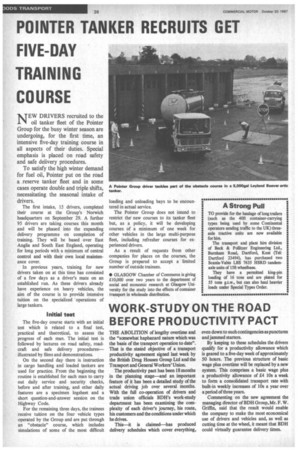WORK-STUDY ON THE ROAD BEFORE PRODUCTIVITY PACT
Page 38

If you've noticed an error in this article please click here to report it so we can fix it.
THE ABOLITION of lengthy overtime and the "somewhat haphazard nature which was the basis of the transport operation to date". That is the stated objective of a transport productivity agreement signed last week by the British Drug Houses Group Ltd and the Transport and General Workers' Union.
The productivity pact has been 18 months in the planning stage—and an important feature of it has been a detailed study of the actual driving job over several months. With the full co-operation of drivers and trade union officials BDH's work-study department has been examining the complexity of each driver's journey, his route, his customers and the conditions under which he drives.
This—it is claimed—has produced delivery schedules which cover everything, even down to such contingencies as punctures and jammed starters.
By keeping to these schedules the drivers qualify for a productivity allowance which is geared to a five-day week of approximately 50 hours. The previous structure of basic wage phis overtime will be replaced by a new system. This comprises a basic wage plus a productivity allowance of £4 10s a week to form a consolidated transport rate with built-in weekly increases of lOs a year over a period of three years.
Commenting on the new agreement the managing director of BDH Group, Mr. F. W. Griffin, said that the result would enable the company to make the most economical use of drivers and vehicles and, as well as cutting time at the wheel, it meant that BDH could virtually guarantee delivery times.








































































































































